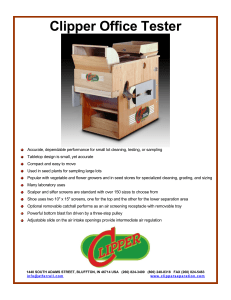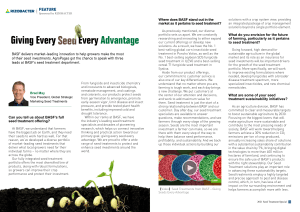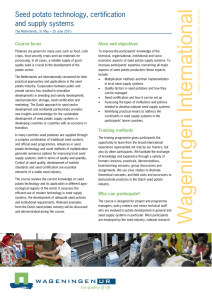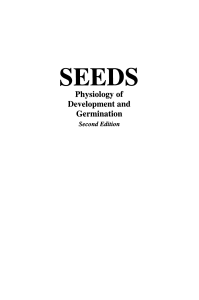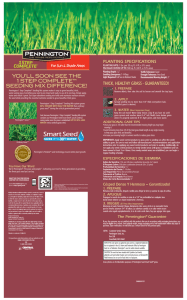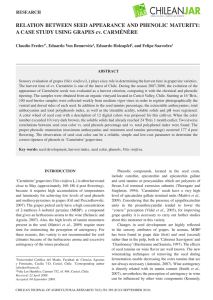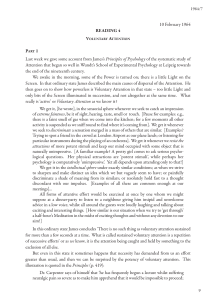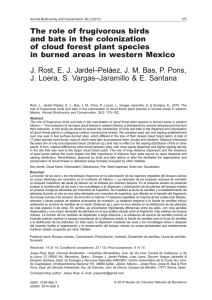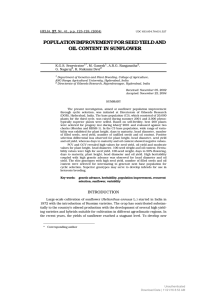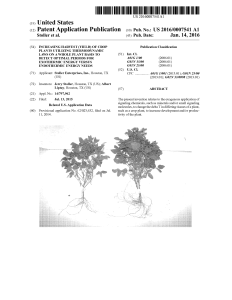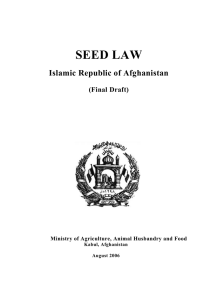No. 16: Hemigenia and Hemiandra1000.55 KB
Anuncio
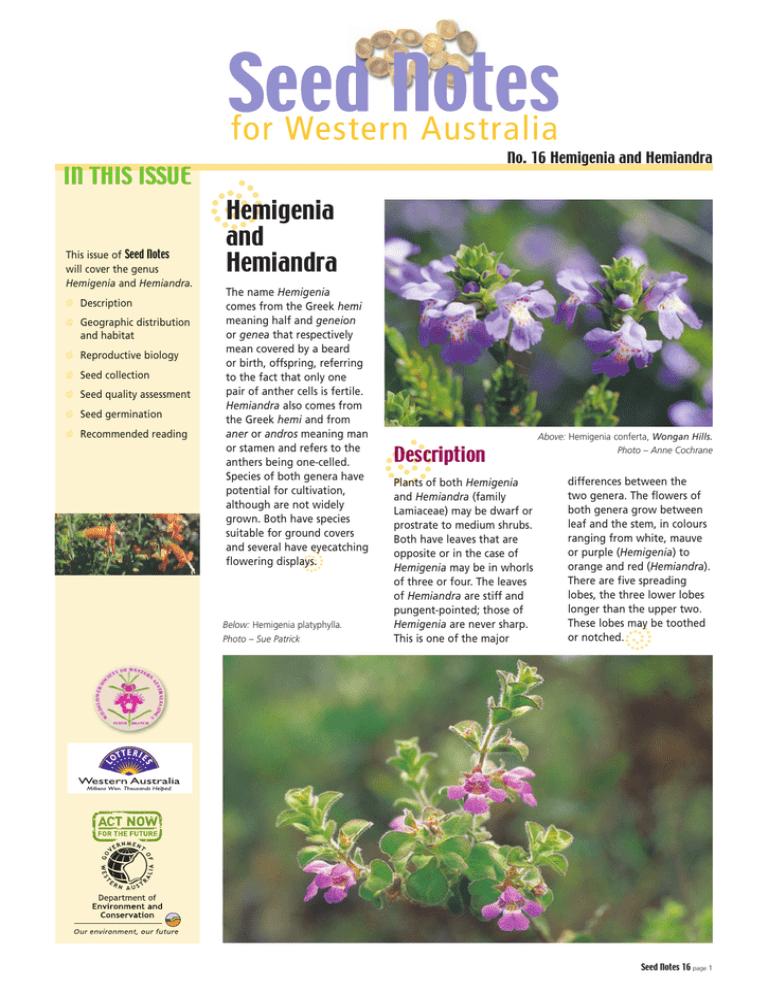
IN THIS ISSUE This issue of Seed Notes will cover the genus Hemigenia and Hemiandra. D Description D Geographic distribution and habitat D Reproductive biology D Seed collection D Seed quality assessment D Seed germination D Recommended reading No. 16 Hemigenia and Hemiandra Hemigenia D and Hemiandra The name Hemigenia comes from the Greek hemi meaning half and geneion or genea that respectively mean covered by a beard or birth, offspring, referring to the fact that only one pair of anther cells is fertile. Hemiandra also comes from the Greek hemi and from aner or andros meaning man or stamen and refers to the anthers being one-celled. Species of both genera have potential for cultivation, although are not widely grown. Both have species suitable for ground covers and several have eyecatching flowering displays. D Below: Hemigenia platyphylla. Photo – Sue Patrick D Description Plants of both Hemigenia and Hemiandra (family Lamiaceae) may be dwarf or prostrate to medium shrubs. Both have leaves that are opposite or in the case of Hemigenia may be in whorls of three or four. The leaves of Hemiandra are stiff and pungent-pointed; those of Hemigenia are never sharp. This is one of the major Above: Hemigenia conferta, Wongan Hills. Photo – Anne Cochrane differences between the two genera. The flowers of both genera grow between leaf and the stem, in colours ranging from white, mauve or purple (Hemigenia) to orange and red (Hemiandra). There are five spreading lobes, the three lower lobes longer than the upper two. These lobes may be toothed or notched. D Seed Notes 16 page 1 Geographic distribution and habitat D The genus Hemiandra is endemic to Western Australia, whereas Hemigenia is found throughout Australia, though with the majority of species found in Western Australia. There are about 10 species of Hemiandra and 40 species of Hemigenia. Approximate distribution of Both genera are found Hemigenia and Hemiandra in in sandy soils often with Australia. gravel in heathland or in forest communities. Most are found at low altitudes. D Seed collection The fruit of both Hemiandra and Hemigenia is a nut, with generally four nuts held within a capsule. The fruits may ripen differentially, with new fruits reaching maturity over a long period of time. This means that seed collection may need to be done several times over a season, because at any one time there may be immature green fruits as well as ripe fruits present on plants. The seed turns from green to light brown to possibly dark brown depending on the species. The seed will release from the capsule when ripe. Bagging fruits with stockings or muslin will ensure that seed is 5mm collected rather than lost on the ground. D Above: Hemigenia exilis fruit. Below: Hemigenia seed Photos – Anne Cochrane Below: Close up of Hemigenia flower showing spotted throat. Photo – Andrew Crawford Hemiandra hancocksiana ms. Photo – Sue Patrick Reproductive biology D Wasps have been known to pollinate species of Hemiandra. There are also reports of bees, flies and possibly butterflies as pollinators. Some species of both genera flower over a long time, with no specific peak flowering period. Otherwise spring to summer flowering is normal. Plants generally regenerate from seed but some species (e.g. Hemigenia exilis) appear to be able to resprout from rootstock when damaged. D Seed Notes 16 page Seed quality assessment D It is sometimes difficult to distinguish between filled and unfilled seed of both Hemigenia and Hemiandra. It is possible to conduct a flotation test to separate the good from the bad seed. Most filled seed will sink while empty seed will generally float. Place a little drop of detergent in the water with the seed to help disperse the seed. Otherwise a cut test will tell you the proportion of filled to unfilled seed in a collection. The endosperm should fully fill the seed coat. D Above: Hemigenia ramosissima seed. Below: Hemigenia exilis seed dissected from seed coat. Photos – Anne Cochrane Seed germination D Plants of both Hemiandra and Hemigenia can be grown from seed, although germination of some species may take many weeks. Traditionally, plants of the few species in cultivation are grown vegetatively from cuttings. By removing the curved ‘plug’ on the lower side of the seed with a scalpel and forceps, the speed of germination can be increased. This ‘plug’ is bonded to the seed coat by a fatty deposit that may be attractive to ants. Fresh seed gives better results as seed may lose viability if not stored under cool, dry conditions. Above: The first leaves appearing after germination in seed of Hemigenia. Photo – Anne Cochrane Above and below: Germinating seed of Hemigenia exilis. Photos – Anne Cochrane D Below: Hemigenia ramosissima. Photo – Anne Cochrane Seed Notes 16 page Seed Notes for Western Australia These Seed Notes aim to provide information on seed identification, collection, biology and germination for a wide range of seed types for Western Australian native species. They have been written and compiled by Anne Cochrane, Manager of DEC's Threatened Flora Seed Centre. Concept by Grazyna Paczkowska. Designed by DEC’s Graphic Design Section. The Seed Notes are available from www.naturebase.net Recommended reading Cochrane, A., Brown, K., Meeson, N. and Harding, C. 1999. The germination requirements of Hemigenia exilis (Lamiaceae)—Seed plug removal and gibberellic acid as a successful technique to break dormancy in an arid zone shrub from Western Australian. CALMSCIENCE 3, 1, 21–30. Seed Notes 16 page Elliot, W. R. and Jones, D. L. 1984. Encyclopaedia of Australian Plants Suitable for Cultivation. Volume 5. Lothian Publishing, Melbourne. Sharr, F. A. 1978. Western Australian Plant Names and their Meanings. A Glossary. University of Western Australia Press, Perth. D are published by the Perth Branch of the Wildflower Society of Western Australia (Inc.) with assistance from the Western Australian Lotteries Commission and the Department of Environment and Conservation (DEC). 2007501-0308-1 D Seed Notes Above: Hemiandra pungens. Photo – Andrew Crawford
